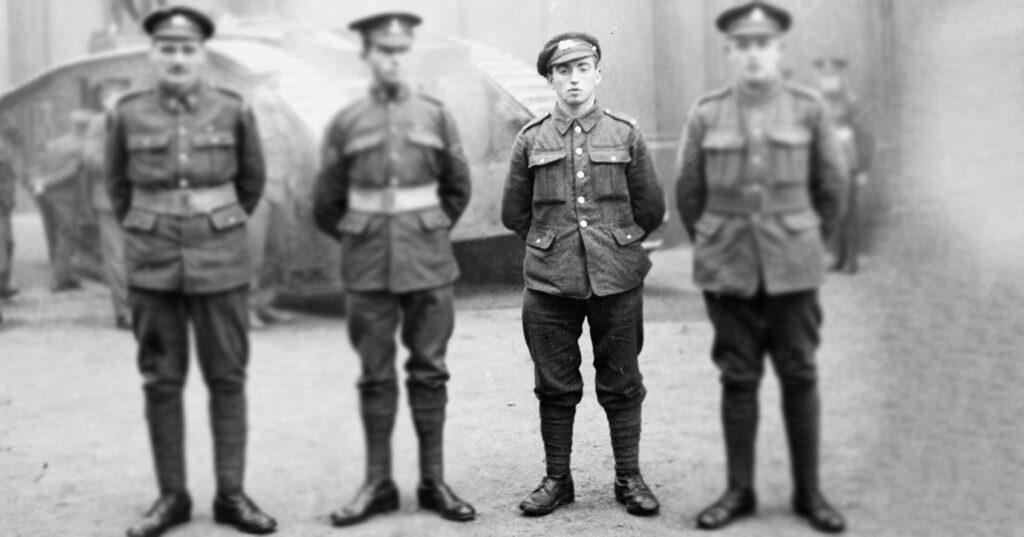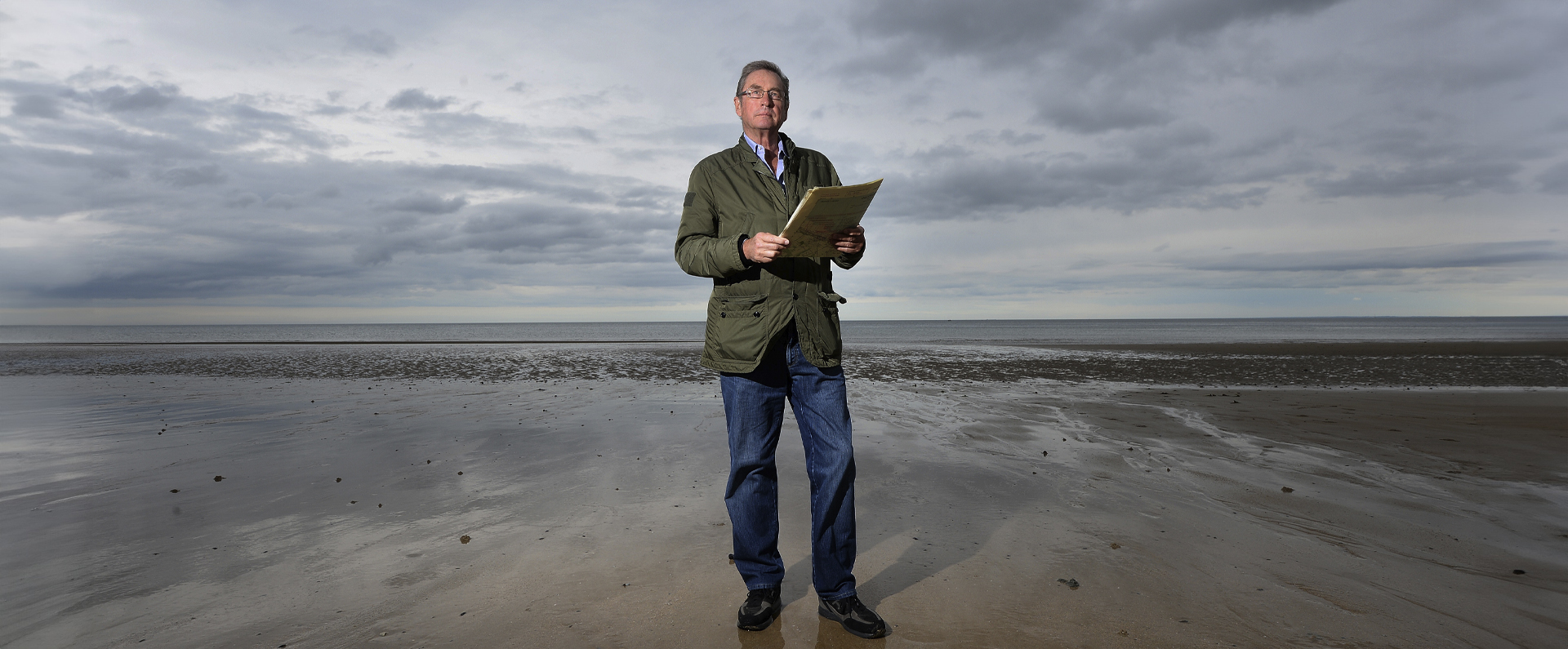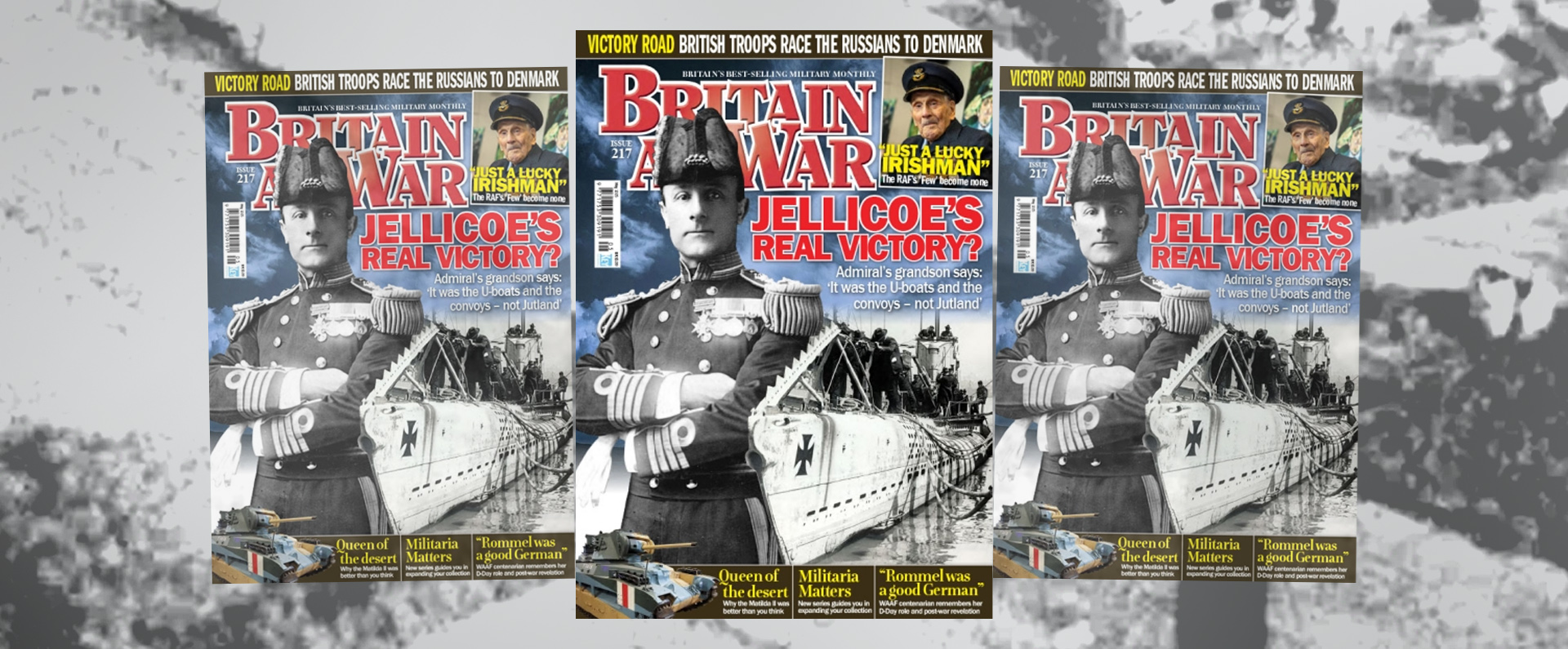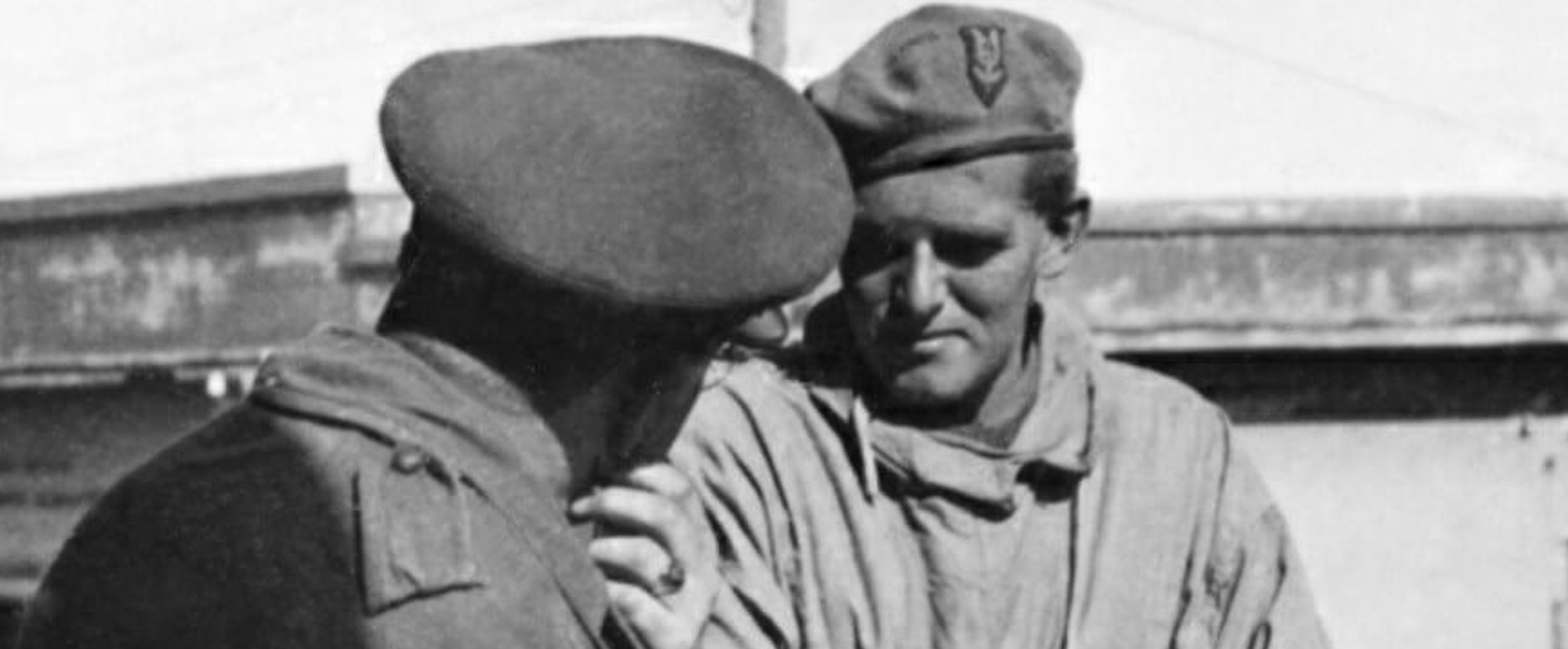
Published in Britain at War in October 2017.
Captain William Boynton Butler VC: sacrifice
William Boynton Butler was born in Armley, Leeds, Yorkshire, on 20 November 1894. He was the illegitimate son of William Boynton, a colliery worker, and his wife Caroline Butler, a wool weaver. In fact, his parents married shortly after his birth in December that year, by which point he had already been given his mother’s surname as his own surname and his father’s surname as his second Christian name.
William Butler’s childhood was spent at his family’s modest home in Hunslet, Carr, Leeds, where he lived with his parents and his brother and three sisters. He was educated locally at St Oswald’s school in Hunslet, which he left around 1907.
Butler, who was quiet and unassuming, spent some seven years “down the pit” as a pony driver, working in the same coal mine as his father before enlisting. He eventually joined one of the newly-created “Bantam Battalions” (for men of less than 5 foot 3 inches in height), the 17th (2nd Leeds Pals), West Yorkshire Regiment, in Leeds on 9 January 1915. He had previously been turned down for the military on the grounds that he was too short at 5 feet 2 ½ inches tall. Once in the Army, however, Butler was attached to a Trench Mortar Battery and was trained at Ilkley, Yorkshire.
By June 1916, he was serving on the Western Front attached to the 106th Trench Mortar Battery (also known as a Stokes mortar battery after the name of the weapon’s inventor). On 6 August 1917, Butler was in charge of a mortar on the British line east of L’Empire, France. His precise position was between Cambrai and St Quentin, some 60 miles to the south of the Third Battle of Ypres, which had commenced in Flanders on 31 July – exactly a week earlier.
In fact, on 5 August the 17th West Yorkshires had been relieved from their frontline position by the 19th Durham Light Infantry, returning to billets at L’Empire. However, the next day was misty and the enemy, apparently taking advantage of the favourable weather conditions, successfully raided Guillemont Farm at around 3.30 am with a force of some 150 troops. Within 45 minutes, the West Yorkshires had “stood to” and during the night and the following day they supplied working parties.
It was during heavy fighting on 6 August that Butler showed such quick thinking and bravery that he was later awarded the VC. His citation, published on 17 October 1917, takes up the story:
“For most conspicuous bravery when in charge of a Stokes gun in trenches which were being heavily shelled. Suddenly one of the fly-off levers of a Stokes shell came off and fired the shell in the emplacement. Private Butler picked up the shell and jumped to the entrance of the emplacement, which at that moment a party of infantry were passing. He shouted to them to hurry past as the shell was going off, and turning round, placed himself between the party of men and the live shell and so held it till they were out of danger.
“He then threw the shell on to the parados [a protective, elevated area of earth and sandbags at the rearmost-side of a trench], and took cover in the bottom of the trench. The shell exploded almost on leaving his hand, greatly damaging the trench. By extreme good luck Private Butler was ,ed [severely bruised] only. Undoubtedly his great presence of mind and disregard of his own life saved the lives of the officer and men in the emplacement and the party which was passing at the time.”
By 10.30 p.m. the following day, the 17th West Yorkshires were relieved once again, this time by the 18th Highland Light Infantry. Weeks late Butler described to the press how the shell had been fired into the emplacement.
“I picked it up and showed it to my mate. ‘It’s going off,’ I said. “I know it is,” he replied, and stopped still and never shifted. I hardly knew what I did, but I jumped to the entrance of the emplacement with the shell, which was an eleven-pounder, and there I saw a party of infantry passing.
“I shouted to them to get out of the way, and they did so quickly. Those on the right rushed away, and a man turned about a dozen men back with him. I then threw the shell on to the parados. Not being too far over, it fell back to the bottom of the trench and burst. It damaged the trench, but didn’t injure any of the men.”
It appears Butler was more seriously wounded at some point after his VC action but, following medical treatment, he was back with his battalion on 18 November 1917.
Butler received his VC from George V at an investiture at Buckingham Palace on 5 December 1917, when his parents were present. The next day he was the guest of honour at a civic reception in Leeds.
On the same day, he visited his old school, St Oswald’s, where he was presented with a china clock from the citizens of Leeds. He also received a gold medal from a Leeds man and £300 from other well-wishers. After the war, he was also awarded the French Croix de Guerre.
On 7 February 1920, Butler married Clara Johnson at Hunslet Registry Office and the couple went on to have a daughter. It is understood that Butler was given a medical discharge from the Army in 1921. After that, he worked for the North East Gas Board.
For the rest of his life, Butler was an enthusiastic supporter of his regimental association and also the Victoria Cross and George Cross Association. In 1940, after the outbreak of the Second World War, he served in the Home Guard.
After the war, Butler attended the Victory Parade of June 1946. During the final years of his life, he suffered from poor health and he died in his home in Leeds on 25 March 1972, aged 77.
Butler was given a full military funeral four days later and was buried in Hunslet Cemetery, Leeds (originally he had an unmarked grave but this was rectified in 1994). I feel privileged to be the custodian of his medal group having purchased it privately in 2011.
Download a PDF of the original Britain at War article
For more information, visit:
LordAshcroftOnBravery.com


